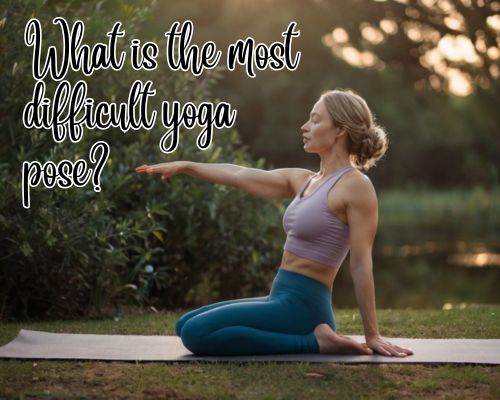What Are the Basics of Yoga Therapy? A Comprehensive Guide for Mornington, Australia
Yoga therapy is an integrative approach to health and wellness that blends the ancient wisdom of yoga with modern therapeutic techniques to support physical, mental, and emotional well-being. In Mornington, Australia, where holistic wellness practices are thriving, yoga therapy is gaining recognition as a powerful tool for stress management, injury recovery, and overall health improvement.

Understanding Yoga Therapy
Bikram Yoga Mornington highlights that yoga therapy differs from traditional yoga in that it is tailored to individual needs and specific health conditions. While general yoga classes focus on flexibility, strength, and relaxation, yoga therapy is designed as a complementary healthcare practice that works alongside conventional medical treatments. Certified yoga therapists use a combination of postures (asanas), breathwork (pranayama), meditation, and mindfulness techniques to address physical and psychological challenges.
Key Components of Yoga Therapy
- Personalized Approach – Unlike general yoga classes, yoga therapy is customized to each individual’s health needs, whether they are dealing with chronic pain, stress-related disorders, or mobility limitations.
- Breathwork (Pranayama) – Controlled breathing techniques help regulate the nervous system, reduce stress, and improve respiratory function.
- Asanas (Postures) – Therapeutic yoga poses are carefully selected to support mobility, strength, and healing while avoiding strain or injury.
- Meditation and Mindfulness – Practices such as guided meditation and body awareness exercises help individuals develop a deeper connection with their bodies and minds.
- Lifestyle and Holistic Well-Being – Yoga therapy often includes recommendations for diet, sleep, and daily routines that promote overall health and well-being.
Benefits of Yoga Therapy for Mornington Residents
Mornington is known for its vibrant wellness community, with many individuals seeking natural and holistic methods to maintain health. Yoga therapy aligns well with the local lifestyle, offering benefits such as:
- Pain Management – Individuals suffering from back pain, arthritis, or sports injuries can benefit from customized yoga therapy routines that support mobility and reduce discomfort.
- Mental Health Support – Yoga therapy has been shown to alleviate symptoms of anxiety, depression, and PTSD by calming the nervous system and fostering emotional resilience.
- Chronic Condition Management – Conditions such as diabetes, hypertension, and autoimmune diseases can be better managed with therapeutic yoga practices that support overall well-being.
- Enhanced Flexibility and Strength – By incorporating targeted asanas, individuals can improve balance, flexibility, and strength, which are crucial for aging populations and active residents in Mornington.
- Stress Reduction – With the fast-paced lifestyle many people experience, yoga therapy offers a structured way to unwind, reduce stress, and enhance mental clarity.
Finding the Right Yoga Therapy in Mornington
Mornington boasts a range of wellness centers, yoga studios, and certified yoga therapists offering personalized programs. If you’re considering yoga therapy, look for practitioners certified by recognized organizations such as the International Association of Yoga Therapists (IAYT) or Yoga Australia. Some reputable studios in the area include:
- Bikram Yoga Mornington – Known for its expert instructors and specialized therapeutic yoga sessions.
- Soul Movement Yoga – Offers private yoga therapy for individuals with specific health needs.
- Peninsula Yoga Therapy – Specializes in customized healing programs, particularly for injury recovery and chronic pain management.
How to Get Started with Yoga Therapy
- Identify Your Needs – Determine your health goals, whether it’s stress relief, pain management, or improved flexibility.
- Consult a Certified Yoga Therapist – Seek guidance from an experienced therapist who can assess your condition and develop a personalized plan.
- Start with Private Sessions – One-on-one therapy allows for focused attention and customized routines tailored to your body’s needs.
- Integrate Practices into Daily Life – Yoga therapy is most effective when combined with healthy lifestyle choices, including proper nutrition and regular movement.
- Be Consistent – Just like any wellness practice, consistency is key to experiencing lasting benefits.
Conclusion
Yoga therapy is an empowering and holistic approach to well-being that caters to both physical and mental health. In Mornington, Australia, where wellness and nature go hand in hand, yoga therapy offers a valuable resource for individuals seeking natural healing and self-care. Whether you are recovering from an injury, managing a chronic condition, or simply looking to enhance your well-being, yoga therapy provides a structured, evidence-based approach to a healthier, more balanced life.
If you’re in Mornington and interested in exploring yoga therapy, start by reaching out to a local certified therapist to discuss how this transformative practice can support your health goals. With the right guidance and commitment, yoga therapy can help you achieve greater vitality, resilience, and peace of mind.







